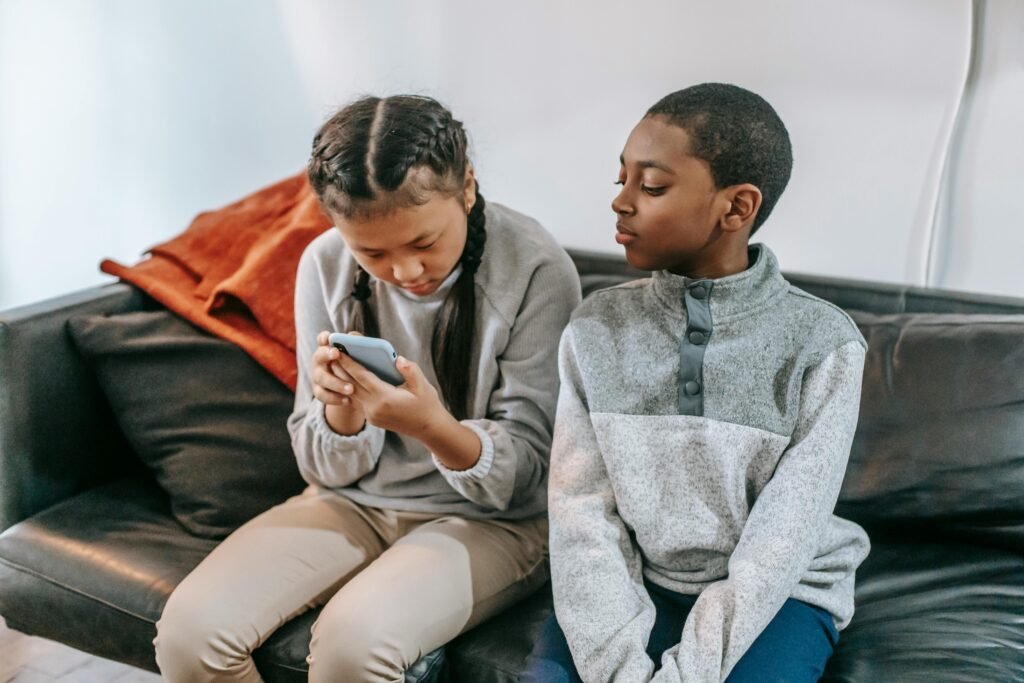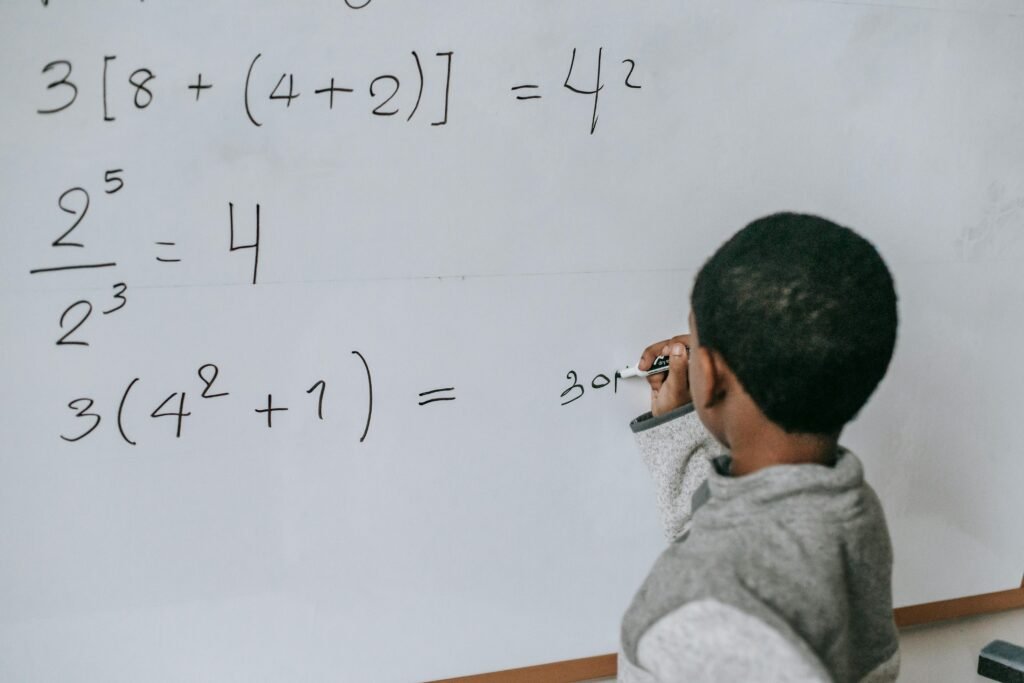Screens are everywhere. From the moment your child wakes up to the time they go to bed, chances are they’ve looked at a screen more than once—and maybe even more than ten times. Phones, tablets, laptops, TVs, even smart watches—they’re all part of our everyday life. And while they help us connect, learn, and entertain ourselves, they also come with a hidden cost.
1. Children who spend more than 3 hours per day on screens are 60% more likely to experience anxiety symptoms
Three hours might not sound like much. That’s just one movie or a few videos on YouTube. But when a child spends more than three hours on a screen every day, something serious starts to happen inside their mind.
Research shows these children are 60% more likely to feel anxious. That means they might worry more, feel nervous without reason, or struggle to relax—even when everything seems fine.
Why does this happen? It’s not just what’s on the screen—it’s what screens take away. When kids are glued to devices, they’re missing out on things that calm the brain: real play, face-to-face talk, nature, sleep, and simple boredom (which actually sparks creativity).
Instead, screens give a steady rush of fast-moving images, loud sounds, and constant rewards. This overloads the brain, especially young ones that are still growing.
And here’s the truth: anxiety doesn’t always look like panic. It might show up as tummy aches, trouble sleeping, refusing school, or even acting out. Parents might miss it or think their child is “just being difficult.” But behind those behaviors could be a mind stuck in overdrive.
What can you do? First, track the screen time. Most phones and tablets show how many hours your child uses them. Start with awareness. Then, set clear limits—but do it with love. Don’t make it a punishment.
Instead, talk about why you’re doing it: “We’re giving your brain a break.” Fill that new free time with calming activities: art, music, walks, reading, or even just cuddling and chatting.
Also, watch the content. Not all screen time is equal. Fast-paced games and dramatic videos can spike anxiety. Try to swap some of it with slower, calming shows or educational apps. Better yet, join them. Make screen time a shared activity. Laugh together. Learn together.
If your child already shows signs of anxiety, talk to a doctor or counselor. But also look at the screens. That small glowing device might be doing more harm than you think.
2. Teens with more than 7 hours of screen time per day are twice as likely to be diagnosed with depression
Seven hours sounds like a full-time job. But for many teens, that’s just a regular day—scrolling before school, texting between classes, streaming after dinner, gaming at night. It adds up fast. And the consequences are serious. Teens who use screens for more than seven hours daily are twice as likely to be diagnosed with depression.
Depression in teens can be hard to spot. It doesn’t always look like sadness. It might look like anger, tiredness, lack of motivation, or pulling away from family. But deep down, they may feel hopeless, numb, or empty. And screens, which seem fun at first, can make it worse. Here’s how.
First, there’s the comparison game. On social media, everyone looks perfect. Teens compare their real, messy lives to these fake highlight reels. This can crush their self-esteem. Second, screens can replace real-life connections.
Even though teens are constantly “connected,” many feel deeply lonely. That’s because likes and emojis are not real friendship. Third, late-night screen use messes with sleep—and poor sleep is a major trigger for depression.
So what can you do? Start with open conversation. Not judgment. Ask how they feel after spending time online. Do certain apps make them feel worse? Which ones lift them up? Help them notice the difference.
Next, build “no-screen zones.” Dinner time. Car rides. One hour before bed. Even just protecting these small pockets can make a big difference. Encourage real-world fun. Let them invite a friend over. Take them to a class, a walk, or just out for ice cream.
And remember: you don’t have to go from seven hours to zero. Start small. Even reducing screen time by one hour a day has shown to improve mood. And if your teen is already struggling, talk to a mental health professional. But don’t ignore the screens. They’re often part of the problem—and part of the solution.
3. A 1-hour increase in screen time is linked to a 10% increase in attention problems in kids
It might not seem like much. Just one extra hour. But studies show that even one more hour of screen time a day can increase attention problems in kids by 10%. That’s not just zoning out during a movie. It can mean trouble focusing in school, jumping from task to task, or giving up quickly when things get hard.
Why does this happen? Because screens train the brain to expect fast rewards. Tap. Swipe. Win. Everything happens fast. But learning doesn’t work that way. Real learning is slow, sometimes boring, and takes effort.
Kids who are used to quick hits of screen entertainment struggle when faced with normal classroom tasks that require patience and focus.
Also, screen time—especially games and fast videos—floods the brain with dopamine. That’s the feel-good chemical. But too much of it makes regular life feel boring. So a simple worksheet or reading time? Feels like torture.
As a parent, this is tough to watch. Your child might be smart but still struggling to sit down and do homework. They might jump from one thing to another or leave things half-finished. But here’s the hopeful part: attention is a skill. And like any skill, it can be rebuilt.
Start by reducing screen time gradually. Not all at once. Instead of pulling it away, replace it with something engaging: puzzles, drawing, building, reading together. These activities stretch attention span gently.
Also, build focus with “brain breaks.” Set a timer: 15 minutes of focus, then 5 minutes of play or movement. Over time, increase the work time. Celebrate effort, not just results. Say things like, “I’m proud of how long you focused!” That builds confidence.
If your child uses screens for school, help them use it wisely. Teach them to close extra tabs. Turn off notifications. Create a calm, screen-free zone for homework. Small steps add up.
4. High screen time is associated with 13% lower academic performance in children
It’s not just about how smart a child is. It’s also about how well they can use their brain to learn, focus, and stay motivated. And when screen time goes up, studies show that academic performance goes down by 13% on average. That’s a big drop—especially over time.
But why does this happen? It’s not because screens make kids “dumber.” It’s because they crowd out the habits and behaviors that lead to better learning. Think about it: more time on screens usually means less time reading, playing outside, sleeping, or talking with family. All of these things build the brain in ways that school depends on.
Also, when children get used to fast-moving videos and instant rewards, regular schoolwork feels harder. They may rush through homework, skip studying, or avoid hard tasks altogether. Even in classrooms that use tablets or computers, kids can be tempted to click away to games or videos if there’s no close supervision.
What’s the solution? It starts at home. Make learning part of daily life, not just something that happens at school. Set regular routines for homework, reading time, and even quiet reflection. Keep screens out of bedrooms and homework areas when possible.
Try using a reward system—but not based on screen time. For example, after completing reading or school tasks, kids can earn a special snack, extra outdoor time, or a fun game with you. Keep it positive and fun. This builds motivation the right way.
Also, talk to teachers. Find out if your child is struggling in class. See if screen time may be a factor. If your child does use screens for learning, teach them to use focus tools like timers or “do not disturb” settings.
It’s not about banning screens forever. It’s about balance. With the right limits and the right habits, academic performance can bounce back—and even get stronger.
5. Students with daily recreational screen use over 2 hours show a 23% drop in reading scores
Reading is one of the most important skills for school and life. But when kids spend more than two hours a day on recreational screen time, their reading scores drop by 23%. That’s a massive gap—and it shows up early.
This isn’t just about not reading enough. It’s about how screens change the way kids’ brains work. Reading builds deep focus, imagination, and vocabulary. It trains the brain to think in full thoughts and follow complex ideas. But screen content—especially short videos, games, or rapid-fire scrolling—trains the brain to scan, skim, and expect quick hits of entertainment.
So, what happens? A child who used to enjoy stories now says books are “boring.” They may skip words, lose focus, or give up quickly. This affects not just reading tests, but all school subjects—because reading is the foundation for learning.
What can you do to help? Make reading part of the fun again. Choose books that match your child’s interests—even comics or graphic novels count. Read together. Talk about the stories. Laugh at the funny parts. Cry at the sad parts. Make it an emotional connection.
Set reading time right after meals or before bed, when the brain is calmer. And make it screen-free. This tells the brain, “This is special time.”
You can also visit libraries or bookstores together. Let your child choose their own books. Ownership builds pride and motivation.
If your child struggles with reading, don’t panic. Get support. Teachers, tutors, or reading programs can help. But also look at screen time. Cutting back—even a little—can lead to big improvements.
6. 43% of teens who use screens heavily report poor mental health
Nearly half of teens who use screens a lot say they don’t feel mentally well. That’s not just stress or tiredness. It includes sadness, anxiety, low energy, and a sense of feeling “not okay.” And it’s deeply worrying.
The connection between screen time and mental health isn’t just about what they see—it’s also about what they miss. When teens spend hours alone on screens, they lose real connections. Even social media, which seems social, can make them feel more alone. That’s because it’s often filled with fake lives, online drama, and unrealistic images.
Also, heavy screen use can create unhealthy habits: late nights, skipping meals, sitting all day, and not getting sunlight. All of these affect mental health.
But here’s where parents can really make a difference. Talk to your teen. Ask how they’re feeling—not just about school, but about themselves. Listen without judgment. Let them know it’s okay to struggle—and it’s okay to ask for help.
Then, work together to create better screen habits. You don’t need to take everything away overnight. Start small. Maybe it’s no screens at dinner. Or one day a week with limited screen use. Let them help choose the rules. When they feel in control, they’re more likely to follow through.
Encourage other ways to relax: sports, music, crafts, walking the dog, or just hanging out as a family. These little moments add up. They teach your teen that joy doesn’t have to come from a screen.

If they still seem down, don’t wait. Talk to a counselor or doctor. But remember, screen habits are often a big piece of the puzzle.
7. Children aged 8–12 spend an average of 4–6 hours per day on screens
This number might shock you—but for many families, it feels totally normal. Kids between 8 and 12 years old are spending four to six hours every single day looking at screens. That’s more time than they spend in school or sleeping on some days.
Some of this time is for learning. But a big chunk is for games, videos, and apps. And while not all screen time is bad, this much screen exposure every day adds up. It can lead to mood swings, weaker focus, poor sleep, and less interest in real-world play.
Kids at this age are still growing fast. Their brains are learning how to connect, how to feel, how to think deeply. Screens can interrupt this natural process. The brain starts craving more noise, more speed, more “fun” from devices—and real life begins to feel dull.
But there’s hope. Kids this age are also flexible. Their brains are still forming habits—and parents can help shape them.
Start by looking at your own habits. Kids learn by watching. If you’re always on your phone, they’ll do the same. Try modeling screen-free moments, like reading a book, working on a puzzle, or chatting after dinner.
Next, replace—not just remove—screen time. Offer fun alternatives: cooking together, building something, dancing, painting, exploring outside. These activities might seem small, but they’re powerful. They train the brain to focus, relax, and enjoy life without constant digital stimulation.
Also, use tools like screen time apps or settings to help limit use. Make it a team effort. Ask your child, “What’s a healthy amount of screen time for us this week?” Give them a voice—and watch them rise to the challenge.
You don’t have to be perfect. Even one hour less a day can make a big difference.
8. 1 in 4 teens report feeling “addicted” to their devices
Imagine a teen saying, “I just can’t stop.” That’s what 1 in 4 teens are feeling right now. They say they’re addicted to their phones or devices. That’s not just a figure of speech—it’s a real sense of losing control. And it’s scary.
This type of screen addiction is different from drug or alcohol addiction, but the brain patterns are shockingly similar. Every like, notification, or message sends a little spark of dopamine—the brain’s reward chemical. Over time, the brain starts to crave that spark again and again. When it’s missing, teens may feel bored, sad, or even angry.
This makes it very hard to stop. Even if a teen knows they should take a break, they feel pulled back in. That’s why they say it feels like an addiction.
What’s the fix? It’s not just about taking away the phone. It’s about replacing the behavior with something that fills the same need: connection, excitement, reward.
Start by naming it. If your teen says they feel addicted, don’t judge. Say something like, “That sounds hard. Let’s figure out a plan together.” Make it a team effort.
Create a phone schedule. Not a punishment, but a healthy routine. For example, no phones during homework, meals, or the first hour after waking up. Slowly build in screen-free time that they can enjoy.
Also, build up other sources of joy. Sports, music, art, volunteering, or part-time work. When teens have purpose, their need for constant digital distraction often fades.
One of the most powerful tools? A screen-free bedroom. Make nighttime a calm, tech-free zone. Use alarms or music players instead of phones. Help them get good sleep—that alone can reduce cravings and emotional swings.
It won’t happen overnight. But when you start gently, with trust and respect, most teens can shift. They want to feel better. They just need a guide—and a plan that works.
9. Kids who use screens excessively are 1.5x more likely to have trouble sleeping
Sleep is fuel for the brain. It’s how children grow, heal, and process everything they’ve learned during the day. But when kids spend too much time on screens—especially at night—they are 1.5 times more likely to struggle with sleep.
Why? There are two big reasons. First, screens give off blue light. This light tells the brain, “Stay awake!” Even if a child feels tired, that blue light can block melatonin—the natural sleep hormone. Second, the content itself matters. Fast-paced videos, games, or dramatic shows can make the brain feel too excited or anxious to calm down.
This means kids may stay up later, fall asleep slower, wake up more often, or have trouble getting out of bed. And when they don’t sleep well, their learning, mood, and focus all suffer.
How can you fix this? Start with bedtime screens. Make a rule: all screens off at least one hour before sleep. This gives the brain time to settle down. If your child says they need a device to fall asleep, offer alternatives: reading a book, drawing quietly, or listening to calming music or an audiobook.
Also, create a strong bedtime routine. Same time every night. A warm shower. Dim lights. Quiet activities. The brain loves patterns—and routines help signal that it’s time to sleep.
Keep all screens out of the bedroom at night. Charge devices in another room. If your child uses a screen for homework late in the day, use blue light filters or night mode settings to reduce harm.
And finally, talk about why sleep matters. Help them understand that a rested brain is a powerful brain. Kids love learning about their own bodies—and when they get it, they’re more willing to change.
10. Poor sleep from screen use is linked to a 33% higher risk of depression
We just talked about how screens mess with sleep. But here’s the bigger problem: poor sleep from screen use raises the risk of depression by 33%. That’s a huge increase—and it affects kids of all ages.
Why does this happen? Sleep isn’t just rest. It’s when the brain sorts emotions, builds memories, and resets for the next day. Without enough sleep, emotions get tangled. Small problems feel big. Motivation drops. Hope fades.
Add screen content into the mix—especially scary, sad, or dramatic shows—and the emotional toll gets worse. Kids may wake up already feeling down or overwhelmed. Over time, this builds into full-blown depression.
So what can you do? Help your child get better sleep by starting with better screen habits. Limit screens at least one hour before bed. Keep devices out of reach overnight. Create a relaxing wind-down routine.
Also, talk about feelings. Ask how they feel in the morning. Do they wake up happy? Tired? Sad? These small check-ins matter.
If your child is already struggling with mood swings, don’t just look at emotions. Look at sleep—and look at screen time too. It’s all connected.
And don’t be afraid to get help. Pediatricians, school counselors, or child therapists can give you tools. But don’t underestimate how powerful good sleep can be. It’s one of the most natural ways to protect a child’s mental health.
11. Children with more than 2 hours of screen time a day have a 64% higher risk of emotional problems
Two hours. That’s the magic number. Once kids go beyond that each day, their risk of developing emotional problems—like anxiety, sadness, or irritability—jumps by 64%. That’s more than half.
This doesn’t mean every child who watches TV or plays games for three hours a day is in danger. But it does mean there’s a strong link between screen habits and emotional health.
Why is this happening? Too much screen time takes away the emotional “practice” kids need. Things like playing with others, dealing with boredom, solving small conflicts, and feeling safe in the real world. Screens can also bring in scary news, stressful ads, or social pressure—especially if the child is using apps not made for their age.
So how do we protect them? First, set daily screen limits. If your child is over 2 hours now, don’t panic. Just reduce it slowly. Aim for 15 minutes less per day until you hit your goal.
Use screen-free times to reconnect emotionally. Ask your child how their day was. Share stories. Cook together. Even 10 minutes of real connection can calm their brain and grow their emotional strength.
Also, help them understand what they’re feeling. If they’re upset after screen time, talk about it. Say, “It seems like that video made you feel worried. Want to talk about it?” This builds emotional intelligence—and it shows them you’re a safe place.
Finally, trust your instincts. If something feels “off” with your child, don’t ignore it. Screens might be part of the issue—and reducing them might be the first step to healing.
12. Social media use correlates with a 70% rise in self-reported anxiety among teens
That’s right—a 70% rise in anxiety, just from social media use. That number is huge. It means that when teens spend a lot of time on platforms like Instagram, TikTok, Snapchat, or even YouTube, their chances of feeling anxious shoot way up.
This isn’t just about scary content or cyberbullying. It’s also about constant comparison. Teens scroll through perfect selfies, exciting parties, dream vacations—and they wonder, “Why isn’t my life like that?” Even though they know it’s edited and filtered, the feelings are real. It makes them feel like they’re not enough.
Then there’s the pressure to respond. Notifications never stop. Messages pile up. If they don’t reply fast enough, they worry friends will be upset. If their post doesn’t get enough likes, they wonder what’s wrong with them. All this creates stress, even when nothing is actually wrong.
So what can parents do? Start by helping your teen understand the why. Talk openly about how social media can mess with the brain. Share stories or articles that explain it. Teens are smart—they just need context.
Next, set limits together. Instead of banning apps, work with them to create healthy habits. Maybe it’s no scrolling before school. Or no checking social media during meals. Small changes help lower anxiety levels.
Encourage them to follow positive accounts. Funny videos, inspiring quotes, or creators who talk about real struggles—not just perfect images. And remind them that it’s okay to unfollow people who make them feel bad.
Most importantly, check in with their feelings. Ask, “How do you feel after being on Instagram?” Not every time, but once in a while. This helps them notice patterns and make better choices.
And if the anxiety is already high, consider a break. Even one week off social media has been shown to reduce anxiety in teens. Frame it as an experiment—not a punishment. Let them decide how they want to spend that screen-free time instead.
13. 25% of teens say social media makes them feel worse about their lives
A full 25% of teens—that’s one in four—admit that social media makes them feel worse about their own lives. This isn’t about boredom or distraction. It’s about self-worth. After scrolling, they feel like they’re not smart enough, pretty enough, rich enough, or popular enough.
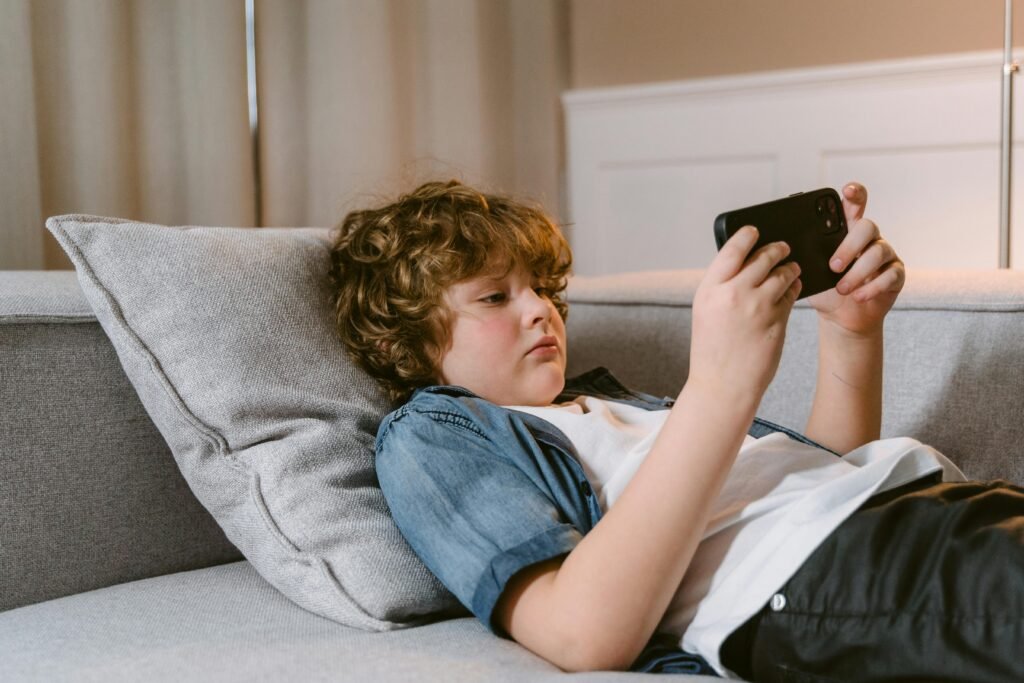
That’s because social media is often a highlight reel. It’s not real life—it’s the best moments of someone else’s life. But when teens see this over and over, they start to believe everyone else is happier or more successful than they are.
Even worse, they sometimes try to keep up. Posting for likes. Editing their photos. Stressing over comments. It becomes a cycle—and it’s exhausting. It takes their focus away from school, family, hobbies, and even their own dreams.
So how do you help? Start by validating their feelings. Don’t brush it off or say, “Just ignore it.” Instead, say things like, “Yeah, it’s hard not to compare.” Then ask open-ended questions like, “What would make social media feel better for you?”
Encourage breaks—not because they’re in trouble, but because they deserve peace. Suggest a weekend off. Or a new rule: check socials only twice a day. Little boundaries help them feel more in control.
Talk about “real vs. fake.” Show them side-by-side comparisons of edited and unedited pictures. Help them see how much is filtered. This shifts their mindset from jealousy to awareness.
Also, help them build a life offline that they’re proud of. If they feel strong in real life—through hobbies, friendships, and family—then what happens online won’t hit as hard.
If your teen seems down, moody, or withdrawn after scrolling, say something like, “Hey, I noticed you seemed a little low. Want to talk?” Even if they say no, they’ll remember you cared.
14. Students who use digital devices during class have 20% lower memory retention
School is about learning—but learning takes focus. When students use digital devices in class for non-learning tasks, like texting or scrolling, their memory drops by 20%. That means they forget more, learn less, and often fall behind.
Why does this happen? Because the brain can’t truly multitask. When it’s switching between listening to the teacher and checking a phone, it loses attention. Important details slip away. Even quick glances at a screen can interrupt the flow of learning.
It’s not just phones, either. Laptops or tablets, if misused, can cause the same problem. Students might think they’re taking notes, but one open tab leads to another—and suddenly they’ve missed half the lesson.
The fix? It starts with awareness. Help your child understand how the brain works. Explain that multitasking feels fast, but it actually slows down learning. Give them examples they can relate to—like how they play a video game better when they’re fully focused.
Work with teachers if possible. Ask about tech rules in the classroom. Are devices being used the right way? If not, it’s okay to suggest changes or ask for support.
At home, build good study habits. When they do homework, encourage “focus mode”—no phone, no TV, no background distractions. Just 20 to 30 minutes of deep work, followed by a break. This trains the brain to hold on to new knowledge.
Also, reward focus. Celebrate effort, not just grades. Say things like, “You really focused hard today—I’m proud of that.” Over time, they’ll value deep focus more than instant messages.
Memory is like a muscle. When it’s used with care, it gets stronger. And learning becomes much easier.
15. Screen multitasking during homework lowers learning efficiency by 40%
This one is big. When kids try to do homework while checking their phone, watching videos, or flipping through tabs, their learning efficiency drops by 40%. That’s almost half as effective as focused work.
It might feel like they’re being productive—typing an essay while texting a friend, listening to music, and checking social media. But the brain isn’t wired for that. Each time it switches tasks, it needs time to refocus. That time adds up—and the quality of learning goes way down.
Worse, multitasking can turn easy homework into a stressful chore. Kids get frustrated, distracted, and tired. They may finish the assignment—but not really understand it. That leads to problems later, during tests or new lessons.
So what can you do? Create a “no multitasking” zone for homework. No phones, no tablets, no background videos. Just a quiet space with the materials they need. Use a timer if it helps. Try 25 minutes of focus, then 5 minutes of break. Repeat.
Help them feel the difference. Ask after: “Was that easier? Did it feel faster?” When they notice the benefits, they’re more likely to stick with it.
Also, talk about habits. Ask: “What usually distracts you when you work?” Then come up with a plan together. Maybe they put the phone in another room. Or turn off Wi-Fi for a bit. Let them choose what works best for them.
If your child really needs background noise, try calm music or ambient sounds. Some kids do better with soft background audio—as long as it’s not distracting.
In the end, it’s not about doing more homework—it’s about doing it better. And that starts with doing one thing at a time.
16. Kids under 5 who use screens for more than 1 hour daily show slower language development
The first five years of a child’s life are crucial for brain growth—especially for language. During this time, kids learn how to talk, listen, understand, and connect with others. But when they spend more than one hour a day on screens, studies show their language development slows down.
Why does this happen? Because language is learned through real interaction. Babies and toddlers need to hear words in context, watch faces, ask questions, and respond. Screen time—especially passive watching—doesn’t provide that rich, two-way connection. Even educational videos can’t replace the power of live conversation.
For example, a child watching a cartoon might hear lots of words. But if no one is there to explain or ask questions, the learning stays shallow. And if screen time takes the place of talking, singing, or reading together, the brain misses important practice.
So what can parents do? First, limit screen time to under an hour a day for kids under 5—and try to keep it interactive. Sit with them. Talk about what’s happening on the screen. Ask, “What’s that animal doing?” or “Can you say that word too?”
Better yet, replace screen time with conversation. Talk while doing everyday things—getting dressed, eating meals, walking in the park. These are golden opportunities for language learning.
Read aloud daily. Books are magical for language. They introduce new words, sounds, and ideas. Even five minutes a day makes a big difference.
And when your child tries to speak—pause and listen. Respond with interest. Even if the words aren’t clear, your reaction shows them that their voice matters.
If you’re worried about speech delays, don’t wait. Talk to a pediatrician or speech therapist. But also look at screen habits. Often, just reducing screen time opens the door for big improvements in speech and understanding.
17. 35% of students report increased stress due to constant notifications
Ding. Buzz. Ping. Every time a notification pops up, it grabs attention—and steals peace. For students, this constant digital noise causes increased stress in 35% of them. It’s like their brain is always “on,” never resting.
Notifications may seem small, but they pack a punch. Each one pulls focus away from whatever a child is doing: homework, sleep, meals, even play. And when they come nonstop, they train the brain to expect interruptions. That makes it harder to focus, relax, or feel calm.
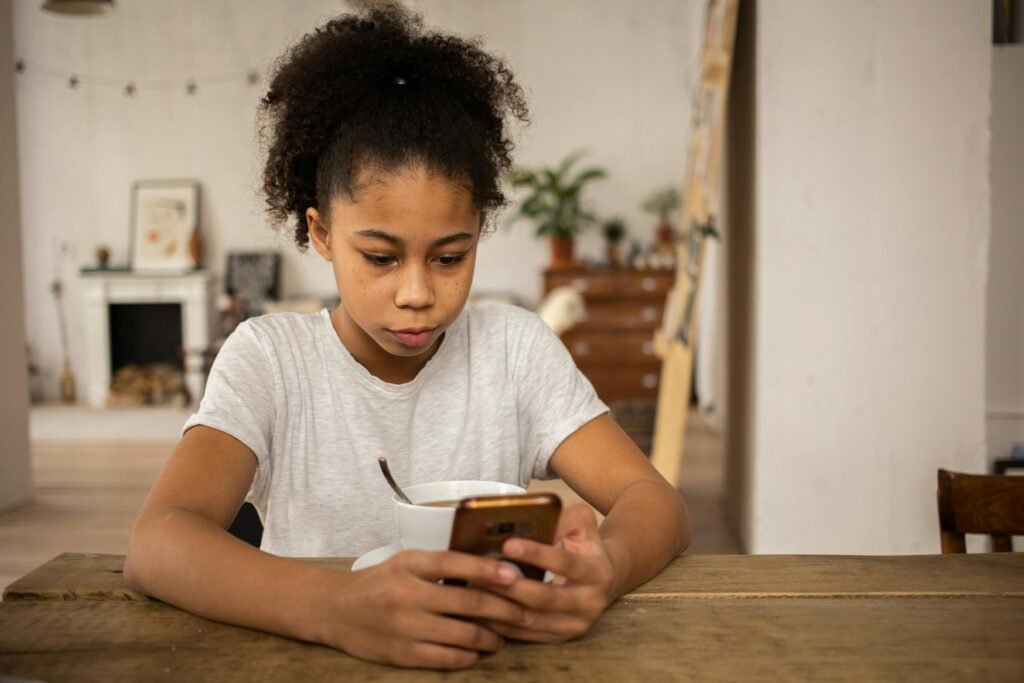
Even worse, notifications often bring emotional triggers—like a mean comment, a low score on a game, or the feeling of being left out. These tiny moments can add up to big stress.
So what’s the solution? Start by turning off non-essential notifications. Go through your child’s device together. Ask, “Do we really need alerts from this app?” The answer is usually no.
Next, build “quiet time” into the day—an hour with no pings or buzzes. Let their brain reset. Use it for homework, reading, or just resting.
At night, put devices on airplane mode or use “do not disturb” settings. That protects sleep, which is key for managing stress.
Also, help your child notice how they feel when notifications are off. Say, “Did it feel easier to focus today?” or “Was your brain quieter?” These little reflections build self-awareness.
Finally, model the same behavior. If your phone is always buzzing, kids will learn to expect that too. Show them how to protect peace—by protecting silence.
18. Teens who check their phone more than 50 times a day are 35% more likely to show depressive symptoms
Checking a phone 50 times a day may sound like a lot, but for many teens, that’s just a regular morning. And those constant checks are tied to a 35% higher chance of feeling depressed.
Here’s why: every check is a tiny hit of hope. Maybe someone texted. Maybe I got more likes. Maybe something exciting happened. But when nothing new is there—or worse, when something upsetting shows up—it chips away at their mood.
This cycle of constant checking creates anxiety, lowers self-esteem, and feeds comparison. Over time, it wears down happiness. Teens may not even realize it, but their phone becomes a source of emotional stress.
So how can you help? Don’t start with blame. Start with curiosity. Ask, “Do you feel better or worse after being on your phone a lot?” Help them notice the pattern.
Then, offer a challenge. Say, “Let’s see what happens if we check our phones just 10 times a day this weekend. Want to try it together?” Make it fun—maybe even turn it into a game.
Use screen time tracking tools to build awareness. Most phones show how many times they’re unlocked each day. Seeing the number can be a powerful motivator.
And again, replace—not just remove. Help your teen fill those “check moments” with something better: a walk, journaling, a hobby, or a real conversation.
Depression is complex. But small daily habits—like checking phones less—can help lift the cloud.
19. Over 30% of children say they feel anxious when separated from their devices
When a device is more than a toy—when it becomes a lifeline—taking it away feels scary. That’s what’s happening to over 30% of children who say they feel anxious when they’re without their devices.
This isn’t just boredom. It’s a deep discomfort, like losing a part of themselves. Some kids cry. Others get angry. Many say they don’t know what to do with themselves.
This is called screen separation anxiety, and it’s real. It means the child has formed an emotional bond with the device—stronger than with people, toys, or even books.
But this can be gently changed.
Start with short breaks. Don’t go from all-day access to zero. Try 30 minutes of screen-free time. Then one hour. Fill that time with something fun or calming—painting, baking, puzzles, a walk.
Let your child help plan the screen-free time. Give them a sense of control. Say, “We’re going to do 1 hour without screens—what would you like to do instead?”
Make screen breaks part of a daily rhythm. Before breakfast. After school. Before bed. When it becomes routine, it feels safe.
Also, talk about feelings. If your child says, “I feel weird without my tablet,” don’t brush it off. Say, “Thanks for telling me. Let’s talk about that.” The goal isn’t just to remove the device—it’s to replace the comfort it gave.
Over time, your child will learn that calm can come from real life too—not just from a glowing screen.
20. Academic achievement is 15% lower among children with excessive daily screen exposure
When screens take over, school performance often takes a hit. Research shows that kids who use screens excessively each day—especially for entertainment—have 15% lower academic achievement compared to those with healthier screen habits.
That means they might score lower on tests, finish fewer assignments, or struggle with long-term projects. But it’s not because they’re not smart. It’s because the screens interfere with everything learning needs—focus, sleep, memory, time management, and emotional regulation.
When a child spends hours each day on games, videos, or social media, there’s less time for reading, thinking, and reflecting. It also teaches the brain to expect constant rewards—so when school feels hard or slow, they lose interest fast.
What can you do to help your child succeed in school without taking away every screen? First, talk about the goal—not the punishment. Say, “I want you to feel proud of your schoolwork, and screen time might be getting in the way.”
Then, set simple rules like “no screens before homework is done” or “30 minutes of reading before videos.” Keep it consistent. Kids thrive on clear routines.
Make homework time tech-free unless absolutely needed. No phones nearby. Turn off the TV. If they’re using a computer, keep it in a shared space so they stay on track.
Also, encourage offline learning. That could be reading, doing a fun science experiment, journaling, or even playing educational board games. These things keep the brain active and support school success.
Finally, celebrate effort. When your child improves, no matter how small, praise their progress. That positive feedback sticks—and helps motivate them more than any screen ever could.
21. Screen time over 4 hours a day is associated with a 49% higher chance of being diagnosed with ADHD
ADHD—Attention-Deficit/Hyperactivity Disorder—is a condition that affects focus, behavior, and emotional control. And studies now show that children who spend more than 4 hours a day on screens have a 49% higher risk of being diagnosed with ADHD.
This doesn’t mean screens cause ADHD. But they can mimic or worsen the symptoms. Fast-paced games, flashy videos, and non-stop stimulation train the brain to expect instant action. That makes it harder for kids to sit still, pay attention, or wait patiently.
Also, when screens replace real-world play, kids miss out on activities that naturally build focus—like puzzles, reading, or imaginative play.
If your child struggles with attention, don’t panic. But do take screen time seriously.
Start with structure. Create a daily routine that includes screen-free periods. Use timers or visual charts so your child knows when screen time starts and ends.
Offer screen time as a reward for completing tasks—not just something that happens automatically. For example, after 20 minutes of reading, they can have 15 minutes of play.
Focus on quality, not just time. Try slower-paced educational shows or interactive apps that encourage thinking. Avoid fast-cut cartoons or addictive games that overstimulate.
If your child already has an ADHD diagnosis, work closely with your doctor or therapist. Ask how screen habits may be affecting symptoms. Together, you can build a balanced plan.
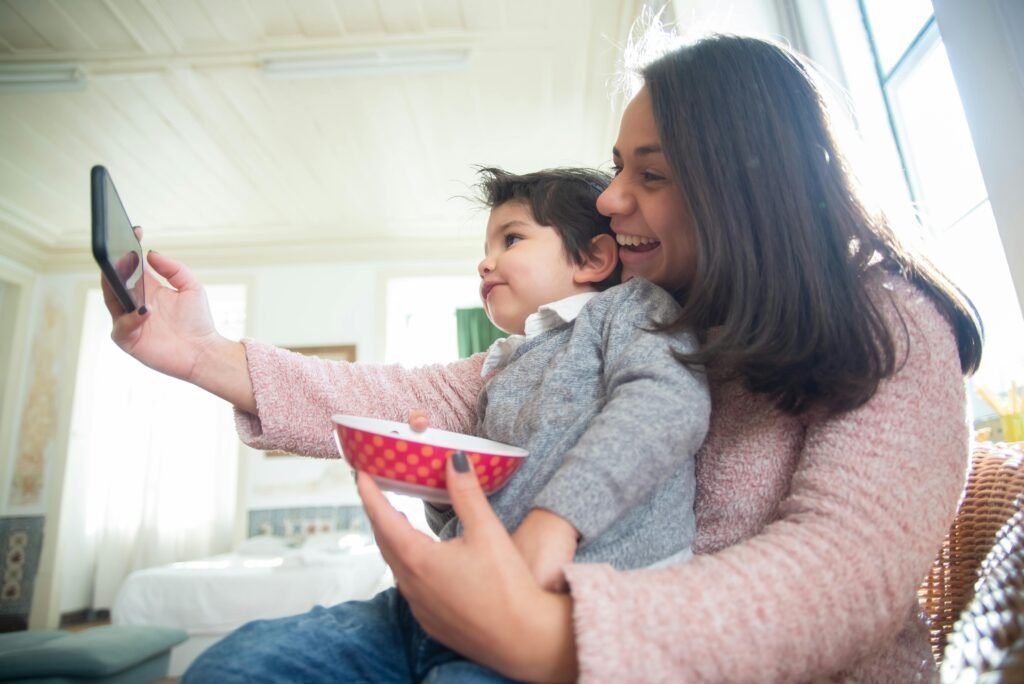
And remember: movement helps. Kids with ADHD often need to move to focus. Let them jump, dance, stretch, or walk during screen breaks. This helps reset the brain and improves focus in healthy ways.
22. 42% of children say screens make it harder for them to focus on school
Almost half of all children—42%—say that screens make it harder for them to concentrate at school. That’s not surprising. After hours of fast-moving videos, games, and messages, the slow, steady pace of a classroom can feel frustrating.
The brain gets used to switching quickly from one thing to the next—swipe, tap, scroll. But school tasks require deep focus: reading a story, solving a math problem, listening to a lesson. These things take mental strength.
When kids are overstimulated, even simple tasks can feel boring or impossible. They may start to fidget, daydream, or avoid their work altogether.
To fix this, we don’t need to make school more “fun” like a game. We need to help kids retrain their brains.
Start with short focus exercises at home. Try a 10-minute “quiet challenge”—can they build, draw, or write for 10 minutes without stopping? Praise their effort, and gradually increase the time.
Limit screens during the week—especially before school and right after. These times are critical for setting the brain’s rhythm for the day.
Talk to your child’s teacher too. Ask if they’re seeing attention issues. If so, share what you’re doing at home and ask how you can work together.
And when your child struggles to focus, don’t get angry. Instead, help them notice it. Say, “Looks like your brain is jumping today. Let’s do something calm for a bit and try again.”
With time, practice, and patience, the brain can relearn how to focus. But the journey starts with awareness—and small, steady changes.
23. More than 50% of high schoolers report that screen use interferes with completing homework
High school students often juggle a lot—classes, sports, chores, maybe even a part-time job. But more than half of them say screens get in the way of getting homework done. That’s a serious issue.
Homework isn’t just busywork. It’s how students practice, prepare, and deepen what they’ve learned. When screens pull them away—through notifications, games, or just temptation—they lose valuable time.
Even 10 minutes here and there adds up. Suddenly, a 30-minute task takes an hour. And that’s when stress sets in. Rushed work, forgotten assignments, and late-night panic become the norm.
So how do you help? Start with one question: “Where do you do your homework?” If it’s near a TV or with a phone in hand, try changing the space. Make it quiet, simple, and screen-free unless needed for the assignment.
Set a clear homework time. Not too late in the day. After dinner is often tricky because kids are tired. Try right after school or after a short break.
If your teen insists they need music or a device, compromise. Use music without lyrics, or apps that block distractions for set periods of time.
Let them take ownership. Ask, “What’s your goal for this assignment?” or “How long do you think it’ll take?” Then hold them to it—with encouragement, not pressure.
And when they finish on time, celebrate. Even just a high five or a “Nice work!” goes a long way.
Helping teens succeed at homework isn’t about nagging. It’s about setting them up to focus—and succeed.
24. Children with more screen exposure are 25% less likely to engage in physical play
Play isn’t just fun. It’s how kids stay healthy, build strength, and learn social skills. But children who use screens a lot are 25% less likely to engage in physical play. That means they miss out on running, jumping, building, and pretending—all the things that grow strong bodies and creative minds.
Why does this matter? Because physical play helps regulate mood, improve sleep, and boost focus. It also builds confidence and social bonds. When screens take over, kids get more isolated, more restless, and sometimes more emotional.
So what can you do? Make movement part of the routine. Set a goal: 30 minutes of play for every hour of screen time. Go outside together, visit a park, or just dance in the living room. Movement doesn’t have to be structured to be powerful.
Create screen-free play times each day. Encourage creative toys—blocks, balls, art supplies, or costume boxes. Let kids explore without a script or score.
And when your child says, “I’m bored,” celebrate! Boredom is the first step toward imagination. Let them figure out what to do without reaching for a screen.
Model movement too. If you go for a walk, invite them. If you stretch or do yoga, let them join in. Kids copy what they see.
The more a child plays in real life, the less they need digital distractions—and the healthier they’ll be in body and mind.
25. Screen-heavy children are more likely to report feeling lonely (by 22%)
It may seem strange—how can a child feel lonely when they’re constantly online, watching videos or chatting with friends? But the truth is, kids who spend a lot of time on screens are 22% more likely to say they feel lonely. Even with hundreds of online followers or gaming buddies, many of these children feel emotionally alone.
Why? Because digital interaction can’t fully replace real human connection. A like is not a hug. A text is not a deep conversation. A funny video doesn’t respond when your child is feeling sad or scared.
When screen time replaces family dinners, outdoor play, or face-to-face friendships, children begin to lose the feeling of being with others. They may be entertained, but not emotionally nourished. And that hunger for connection is what creates loneliness.
Sometimes kids use screens because they already feel lonely. Maybe they’re shy or struggling with friendships. The screen becomes a safe space. But it also becomes a wall—a place to hide instead of a bridge to reach out.
So how can parents help? Start by noticing when your child is on screens for long stretches and ask gentle, curious questions. Say, “Hey, I noticed you’ve been on your tablet a lot today. Want to take a break and hang out for a bit?” Invite them into real moments of connection without guilt or shame.
Look for signs of loneliness, too. Is your child suddenly quieter? More withdrawn? Less interested in things they used to love? Those are signals.
You can create rituals that build connection—daily walks, bedtime chats, cooking together, playing a board game. These small things remind kids that they belong and that they’re not alone.
Also, help them grow real-world friendships. That might mean inviting a classmate over, joining a club, or attending an activity where they can meet peers in a safe space.
It’s okay if your child prefers solo time too. Not all quietness is loneliness. But if screen time is becoming their main way to avoid feelings, it’s time to gently step in and offer something real, warm, and human.
Because in the end, what all children want—more than entertainment—is to feel known, seen, and loved.
26. Each additional hour of screen use is linked to a 7% rise in depressive symptoms
Here’s something powerful: for every extra hour a child spends on screens, their chance of showing signs of depression increases by 7%. That means if your child goes from two to five hours a day, they’re stacking up serious emotional risk—without even knowing it.
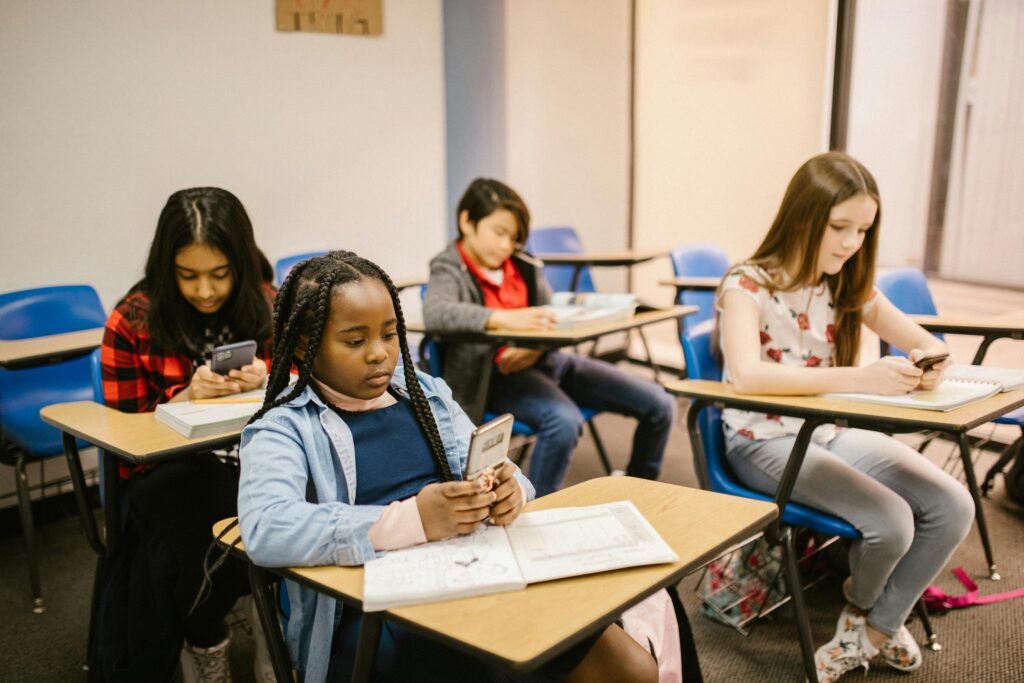
But why does screen time and depression go hand in hand?
First, screens—especially social media or video platforms—are full of highlight reels. Kids scroll through other people’s vacations, awards, perfect selfies, and happy moments. Even if they know it’s curated, their brain starts to compare. Why doesn’t my life look like that? Over time, this comparison turns into a quiet sadness—or worse, a belief that they’re not good enough.
Second, screen time often replaces activities that naturally protect against depression. Exercise. Sleep. Nature. Creative play. Deep conversations. Laughter. Screens crowd these things out and replace them with passivity.
Third, the content itself matters. Violent games, scary shows, or fast-paced, high-drama media can trigger emotional stress. Even the constant stimulation from video games or TikTok can exhaust the emotional centers of the brain, leaving kids moody, irritable, or numb.
So what can you do as a parent? Don’t just focus on total screen hours—look at what your child is doing with that time. Is it passive scrolling? Active learning? Interactive play with friends? Not all screen time is equal.
Next, help your child build a “feel-good” list of activities that aren’t screen-based. Things that lift their mood—drawing, running, building, dancing, journaling, talking to a trusted friend. Keep the list visible and let them choose one thing from it each day.
You can also shift your family’s environment to be more “screen-balanced.” Keep meals tech-free. Set device curfews. Charge phones outside bedrooms at night.
And when you sense your child is down, connect first—don’t just correct. Say something like, “You seem a little off today. Want to talk? Or just sit together for a while?” Your presence is powerful.
Finally, if depressive symptoms persist—like low energy, sadness, irritability, or withdrawal—talk to a counselor or pediatrician. Reducing screen time is a great first step, but sometimes kids need more support. There’s no shame in asking for help.
What matters is that your child knows they’re not alone—and that their feelings are seen, respected, and supported.
27. Students with limited screen time (under 2 hours/day) score 10% higher on mental health assessments
Less really is more. Studies show that students who use screens for less than 2 hours a day tend to score 10% higher on mental health assessments compared to their peers with heavier screen use. This means they are more likely to feel calm, confident, hopeful, and emotionally strong.
What’s special about the two-hour mark? It appears to be the sweet spot where kids can still enjoy digital tools without tipping into emotional strain. Below this line, children tend to get more real-life interaction, better sleep, more physical activity, and richer offline learning. All of these contribute directly to mental well-being.
When screen use is moderate and balanced, kids are more present. They notice their surroundings more. They talk to people more. They are also less likely to compare themselves to unrealistic standards seen online. Instead of chasing likes, they learn to enjoy the moment and build real confidence.
So how can you support your child in keeping screen time below two hours a day?
Start by building a new daily rhythm. Make sure your child’s day includes physical movement, quiet reading, outdoor time, and free play. When these become regular parts of their life, the urge to reach for a screen naturally fades.
Use screen time tracking tools to check daily usage. Let your child help monitor it. Say, “Let’s see how we did today!” Celebrate the days they stay under the two-hour goal with a small reward—a special activity, a game, or praise.
Teach them that the quality of screen time matters too. Watching a 30-minute educational video with you is not the same as 30 minutes of random video scrolling. Help them make good screen choices that build their brain, not drain it.
And don’t forget to model it yourself. When your child sees you enjoying life without constantly looking at your phone, they’ll learn to do the same. Be screen-aware, not screen-obsessed.
This isn’t about perfection. There will be days when screens go over the limit—and that’s okay. The goal is to keep coming back to balance. Because when screen time is managed well, everything else—focus, sleep, relationships, and confidence—gets better too.
28. Children who reduce screen use report a 32% increase in focus and mood within two weeks
This stat gives a powerful dose of hope: kids who cut back on screens—even just for a short while—often see a 32% boost in focus and mood in only two weeks. That’s not years of therapy or complex plans. That’s two weeks of simple change.
Why does this happen so fast? Because the brain is flexible, especially in children. When screen time drops, the brain gets a chance to reset. It can rest from overstimulation. It starts sleeping better, thinking clearer, and enjoying calm moments again.
Children also begin to notice the world around them more. They hear birds. They notice how food tastes. They laugh longer. They get bored—and then they get creative. These small joys add up and shift their entire emotional state.
At the same time, their focus improves. Without screens constantly grabbing their attention, they can finish homework, read books, and complete tasks more easily. This success gives them confidence, and that confidence lifts their mood even more.
So how can you help your child experience this shift?
Begin with a “two-week screen refresh” challenge. Frame it positively: “Let’s see what amazing things happen if we cut back on screens just a little each day for two weeks.” Make it a family effort. Keep it fun.
Set screen-free zones and times. No devices during meals. No screens the hour before bed. No screens in the car. Use that time to talk, sing, think, or just rest.
Offer alternatives that truly engage the brain and heart. Try journaling, puzzles, crafts, sports, cooking, or helping with a family project. Let your child pick some of the activities so they feel in control.
Track the changes together. Ask at the end of each day, “Did anything feel easier today?” “Did your brain feel less tired?” Even if they don’t say much, they’ll start to notice.
By the end of two weeks, you’ll likely see more smiles, better sleep, sharper focus, and a calmer energy in your child. And once they feel that difference for themselves, they’ll be more willing to stick with healthier screen habits.
Because feeling good—really good—feels better than anything on a screen.
29. Only 20% of parents set consistent screen time limits for their children
Here’s a wake-up call: only 1 in 5 parents—that’s 20%—set consistent screen time rules for their kids. That means most children are navigating the digital world without clear guidance or boundaries. And when kids are left to self-manage, screens almost always win.
This isn’t because parents don’t care. It’s because they’re busy, overwhelmed, or unsure what limits are best. Plus, screens are everywhere—TVs, tablets, phones, laptops—and often feel like a tool for keeping peace in the house.
But children actually want boundaries. Limits give them structure, safety, and a sense of calm. When screen time feels unlimited, it becomes confusing. Kids don’t know when to stop, and that can lead to meltdowns, power struggles, and guilt.
So how do you become one of the 20% who sets consistent screen limits—with love and confidence?
Start with clarity. Set a simple, fair screen time rule based on your child’s age. For example, under 2 hours a day for ages 6–12, and even less for younger children. Write it down or post it in the house.
Be consistent. That means the rule stays the same across weekdays and weekends. Yes, some flexibility is okay—but don’t make every day an exception. Predictability helps kids feel safe.
Use timers or visual cues. Maybe it’s a timer on the device or a sticker chart. When kids can see the time themselves, they feel more in control and less likely to resist.
Explain the why. Tell them, “We’re setting these rules to help your brain grow strong, your mood stay happy, and your body stay healthy.” When kids understand the reason, they’re more likely to cooperate.
Stick with it—even if there’s pushback. Over time, the pushback fades and a new rhythm takes its place. You might even hear, “Okay, time’s up!” from your child one day.
Setting screen time limits isn’t about being strict—it’s about showing love. Love that protects their growing mind, body, and heart.
30. Students in screen-free classrooms outperform peers in digital-heavy classrooms by 17% in comprehension tests
Here’s one last stat to blow your mind: students in classrooms with fewer screens outperform their peers by 17% on comprehension tests. That means they understand more, remember more, and learn better—just by having less digital interference.
Why is this so powerful? Because it proves that less tech in the learning environment often leads to more learning. When screens are removed, students are forced to engage fully with the teacher, their books, their writing, and their thoughts.
There’s less distraction. Less temptation to “click away.” And more room for deep focus, creative thinking, and meaningful discussion.
So how can this apply at home?
Even if your child uses a computer for school, you can create a “screen-minimal” homework space. No extra tabs. No videos playing. No phones nearby. Just the tools they need to learn.
Talk to your child’s school, too. Ask how screens are being used. If they’re being used for everything, raise the question: could some parts of the day go back to paper, books, and real interaction?
At home, try screen-free learning activities. Reading books. Writing stories by hand. Doing simple science experiments. Talking about what they learned at school.
You can even set a “screen-free study challenge.” Each day, your child spends 30 minutes studying without a screen. Track progress and celebrate the boost in focus and understanding.

Because when the noise goes away, the learning gets louder. And your child’s brain has space to truly shine.
Conclusion
Screens aren’t going away—and they don’t need to. But we must learn how to use them wisely, especially for our children. The stats you’ve just read are not here to scare you—they’re here to wake us up. To remind us that real learning, deep thinking, and strong mental health grow best in a life filled with movement, connection, quiet, focus, and love.
